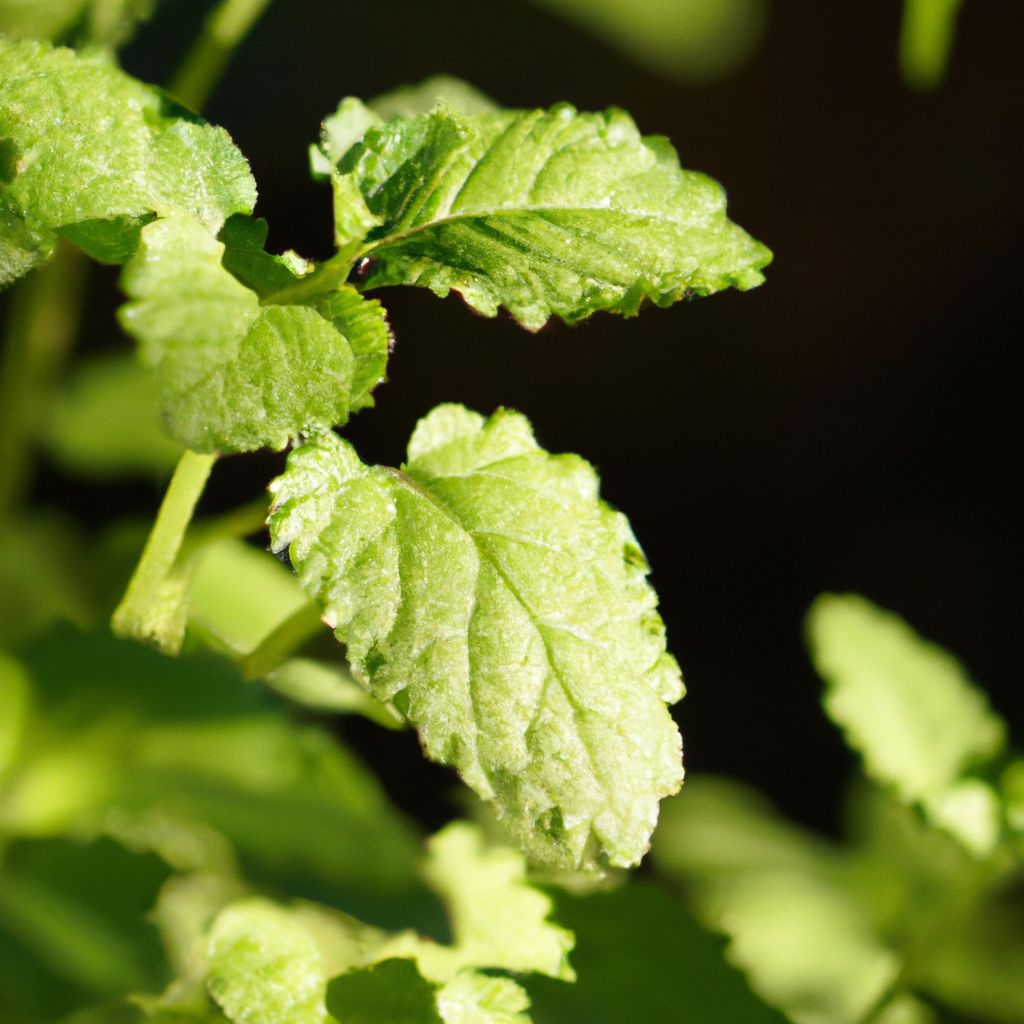Sweet potato cultivation in your backyard can be an immensely satisfying and rewarding experience. Not only do these nutritious tubers provide a delicious harvest, but the entire process of growing them connects you with nature and offers a fun, fulfilling hobby. With a few simple tips and techniques, you can achieve sweet success in your own backyard sweet potato patch.
The Many Benefits of Growing Sweet Potatoes
Sweet potatoes offer a myriad of benefits that make them an excellent choice for home gardeners. First and foremost, they are a powerhouse of essential nutrients, including:
- Vitamin A: Sweet potatoes are an excellent source of vitamin A, providing over 400% of the recommended daily intake in a single serving.
- Vitamin C: These tubers are also rich in vitamin C, an important antioxidant that supports a healthy immune system.
- Dietary Fiber: With a good amount of fiber, sweet potatoes promote healthy digestion and can help maintain a feeling of fullness.
- Antioxidants: Sweet potatoes contain various antioxidants, such as beta-carotene and anthocyanins, which can help protect cells from damage caused by free radicals.
Beyond their impressive nutritional profile, sweet potatoes are incredibly versatile in the kitchen. They can be used in both savory and sweet dishes, making them a delightful addition to a wide range of recipes. By growing your own, you’ll have access to fresh, high-quality produce, while also reducing your carbon footprint and saving money on grocery bills.
Choosing the Right Sweet Potato Variety
Before you begin your sweet potato cultivation journey, it’s important to choose the right variety for your climate and growing conditions. Here are some popular options to consider:
- Beauregard: Known for its deep orange flesh, excellent flavor, and high yield, this variety is a favorite among home gardeners.
- Covington: Produces large, uniform sweet potatoes with a sweet taste and high yield, making it a reliable choice for backyard cultivation.
- Jewel: Renowned for its vibrant orange flesh and moist, sweet flavor, this variety is a delight for those who prefer a sweeter taste.
- Garnet: Features a striking deep red skin and vibrant orange flesh with a unique, slightly earthy taste, offering an alternative to traditional sweet potato flavors.
Consider your preferences for flavor, texture, and color, as well as the growing conditions in your area, when selecting the perfect variety for your backyard sweet potato patch.
Selecting the Ideal Site and Soil Preparation
Sweet potatoes thrive in well-drained, loose, and sandy soil with a slightly acidic to neutral pH range of 5.8 to 6.2. Choose a sunny location that receives at least 6-8 hours of direct sunlight per day, as sweet potatoes require ample sunlight to grow and develop properly.
To prepare the soil for planting, follow these steps:
- Remove any weeds or debris from the area.
- Loosen the soil to a depth of at least 8 inches using a garden fork or tiller.
- Incorporate organic matter, such as compost or well-rotted manure, into the soil to improve fertility and drainage.
- Test the soil’s pH level using a soil testing kit, and adjust it if necessary by adding lime to raise the pH or sulfur to lower it.
- Consider creating raised beds or mounding the soil if your area has heavy clay or poorly draining soil.
Proper site selection and soil preparation are crucial for ensuring a successful sweet potato harvest, as these tubers thrive in well-drained, nutrient-rich conditions.
Planting and Transplanting Sweet Potato Slips
The ideal time to plant sweet potato slips (sprouts) is 2-3 weeks after the last spring frost, when the soil temperature reaches at least 65°F (18°C). This ensures that the soil is warm enough for optimal growth and development.
When planting sweet potato slips, follow these steps:
- Plant the slips 12-18 inches apart within rows, with rows spaced 3-4 feet apart.
- Bury the slips about 1-2 inches deep, ensuring the leaves remain above the soil surface.
- Water the slips thoroughly after planting to promote root establishment.
- Consider using a starter fertilizer or compost tea to give the slips a nutritional boost.
Proper spacing and depth are essential for allowing the sweet potato plants to develop and spread their vines while also promoting good air circulation and minimizing disease risks.
Caring for Your Sweet Potato Plants
Consistent care and maintenance are essential for a bountiful sweet potato harvest. Here are some key practices to follow:
Watering
Water your sweet potato plants deeply once a week, adjusting as needed based on weather conditions. Aim to provide about 1 inch of water per week, but avoid overwatering, as this can lead to root rot and other issues.
Fertilizing
In addition to incorporating organic matter into the soil before planting, apply a balanced fertilizer or compost throughout the growing season to provide essential nutrients. Sweet potatoes benefit from a fertilizer high in potassium, which helps promote root development and overall plant growth.
Mulching
Apply a 2-4 inch layer of organic mulch, such as straw or wood chips, around the plants. This will help suppress weed growth, retain soil moisture, and regulate soil temperature.
Pest and Disease Management
Be vigilant for common pests like sweet potato weevils, which can cause significant damage to the crop. Implement organic pest control methods, such as handpicking or using neem oil, to manage infestations.
Additionally, watch for diseases like fusarium wilt, which can cause wilting and discoloration of the foliage. Proper crop rotation and removal of affected plants can help prevent the spread of diseases.
Harvesting and Curing Your Sweet Potato Bounty
As the leaves of your sweet potato plants begin to turn yellow and die back, it’s a sign that the tubers are ready for harvesting. This typically occurs around 90-120 days after planting, depending on the variety.
When harvesting, follow these steps:
- Carefully dig around the base of the plants using a garden fork or shovel, being mindful not to damage the tubers.
- Gently lift the plants and gather the sweet potatoes, brushing off any excess soil.
- Avoid washing the sweet potatoes, as moisture can promote rotting during storage.
After harvesting, it’s important to cure the sweet potatoes to improve their flavor and extend their storage life. To do this:
- Place the harvested sweet potatoes in a warm, humid environment (around 85°F/29°C with 80-90% humidity) for about 10 days.
- During this curing process, the skin of the sweet potatoes will toughen, and the starches will convert to sugars, enhancing their taste.
Proper Storage for Long-Lasting Sweet Potatoes
Once cured, store the sweet potatoes in a cool, dry, and dark place with temperatures between 55-60°F (13-16°C). A basement or root cellar can provide ideal storage conditions.
Follow these tips for optimal storage:
- Ensure good air circulation by storing the sweet potatoes in a crate, basket, or mesh bag, rather than stacking them directly on top of each other.
- Check the stored sweet potatoes regularly and remove any that show signs of spoilage or rotting to prevent it from spreading to the others.
- With proper storage conditions, sweet potatoes can last for several months, allowing you to enjoy your homegrown harvest well into the winter months.
Savoring the Sweet Potato Delights
Perhaps the most rewarding part of sweet potato cultivation is savoring the fruits of your labor. From classic baked sweet potatoes to decadent pies and casseroles, there are countless delicious ways to enjoy your homegrown harvest.
Sweet Potato Recipes to Try
Here are some mouthwatering recipes to inspire you:
- Sweet Potato Fries: Cut sweet potatoes into thin strips, toss with olive oil and your favorite spices (like paprika, garlic powder, and chili powder), and bake until crispy for a healthy and delicious alternative to regular fries.
- Sweet Potato Casserole: Mash cooked sweet potatoes with butter, brown sugar, cinnamon, and nutmeg. Top with a crunchy pecan streusel and bake until golden and bubbly for a holiday classic.
- Sweet Potato and Black Bean Tacos: Sauté diced sweet potatoes with onions, garlic, and cumin until tender. Add black beans, lime juice, and cilantro for a flavorful vegetarian taco filling.
- Sweet Potato Pancakes: Grate raw sweet potatoes and mix them with flour, eggs, milk, and warm spices like cinnamon and nutmeg. Cook on a griddle until golden brown and serve with maple syrup or Greek yogurt.
- Roasted Sweet Potato Salad: Toss roasted sweet potato cubes with mixed greens, crumbled feta cheese, toasted pecans, and a tangy balsamic vinaigrette for a delicious and filling salad.
These recipes are just a starting point, and you can get creative with sweet potatoes in both savory and sweet dishes. Don’t be afraid to experiment and discover new flavors and combinations that suit your taste preferences.
Tips for Savoring Homegrown Sweet Potatoes
To fully appreciate the unique flavor and freshness of your homegrown sweet potatoes, consider these tips:
- Showcase simplicity: Sometimes, the best way to enjoy the natural sweetness and texture of fresh sweet potatoes is to keep the preparation simple. Try baking or roasting them with just a little olive oil, salt, and pepper to let their true flavor shine.
- Embrace seasonality: Sweet potatoes are at their peak flavor during the fall and winter months, making them a perfect addition to cozy seasonal dishes like soups, stews, and warm salads.
- Share the bounty: Sweet potatoes are a delightful gift to share with friends and family. Consider hosting a sweet potato-themed dinner party or gifting homemade sweet potato baked goods to loved ones.
- Preserve the harvest: If you have an abundant sweet potato harvest, consider preserving some of them for later use. You can freeze cooked and mashed sweet potatoes, or even dehydrate and store them as chips or powder.
By embracing the joy of growing and savoring your own sweet potatoes, you’ll not only nourish your body but also connect with the rhythms of nature and the satisfaction of cultivating your own fresh, nutritious produce.
Start Your Journey to Sweetness Today
Cultivating sweet potatoes in your backyard is a rewarding journey, offering not only a delicious and nutritious harvest but also a profound connection with nature. By following the tips and techniques outlined in this guide, you can embark on a fulfilling adventure that nourishes both your body and soul. Embrace the joy of nurturing these humble tubers, and revel in the satisfaction of serving homegrown treats that are bursting with flavor and vitality. This backyard venture is a testament to the simple pleasures that await when we harmonize with the rhythms of the earth.
Frequently Asked Questions
What is the ideal soil type for growing sweet potatoes?
Sweet potatoes thrive in well-drained, loose, and sandy soil with a slightly acidic to neutral pH range of 5.8 to 6.2. Amending the soil with organic matter like compost or well-rotted manure can help improve soil structure and fertility.
How much sunlight do sweet potato plants need?
Sweet potatoes require plenty of sunlight to grow and develop properly. They should receive at least 6-8 hours of direct sunlight per day. Choose a sunny location in your backyard for optimal growth.
When is the best time to plant sweet potato slips?
The ideal time to plant sweet potato slips is 2-3 weeks after the last spring frost, when the soil temperature reaches at least 65°F (18°C). This ensures that the soil is warm enough for the slips to establish themselves and begin growing.
How often should I water my sweet potato plants?
Water your sweet potato plants deeply once a week, providing about 1 inch of water. Adjust watering frequency based on weather conditions, ensuring the soil remains consistently moist but not waterlogged.
What are some common pests and diseases that affect sweet potatoes?
Common pests include sweet potato weevils, which can cause significant damage to the crop. Diseases like fusarium wilt can cause wilting and discoloration of the foliage. Implementing organic pest control methods and proper crop rotation can help manage these issues.
How do I know when to harvest sweet potatoes?
As the leaves of your sweet potato plants begin to turn yellow and die back, typically around 90-120 days after planting, it’s a sign that the tubers are ready for harvesting. Carefully dig around the base of the plants to retrieve the sweet potatoes.
How should I store sweet potatoes after harvesting?
After harvesting, cure the sweet potatoes by placing them in a warm, humid environment for about 10 days. Once cured, store them in a cool, dry, and dark place with temperatures between 55-60°F (13-16°C) for optimal storage life.
Can sweet potatoes be grown in containers?
Yes, sweet potatoes can be successfully grown in large containers or raised beds, provided they have well-draining soil and receive ample sunlight. Choose a container at least 12-18 inches deep to accommodate the tubers.
What are some creative ways to use homegrown sweet potatoes?
In addition to traditional recipes like baked sweet potatoes, fries, and casseroles, you can get creative with sweet potato pancakes, tacos, salads, and even baked goods like pies and breads. Experiment with different flavors and textures to showcase the versatility of this nutritious tuber.
Can sweet potatoes be preserved for later use?
Yes, you can preserve sweet potatoes for later use. Options include freezing cooked and mashed sweet potatoes, dehydrating them into chips or powder, or canning them in various forms. Proper preservation techniques can help extend the shelf life of your homegrown sweet potatoes.




















































